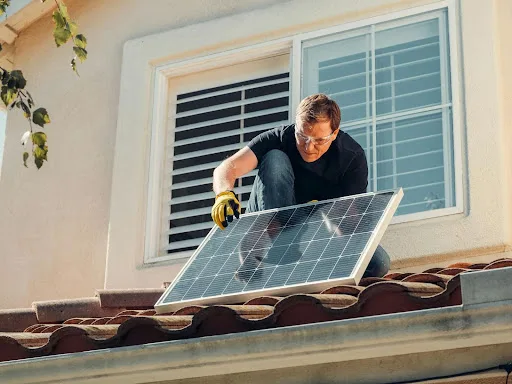Built to Last: The Evolution of Loader Tires
In heavy industry, few pieces of equipment are as vital as the wheel loader. These workhorses are the backbone of operations in construction, mining, and agriculture, moving tons of material with relentless efficiency. But a loader is only as effective as its tires. The constant battle against harsh terrain, heavy loads, and sharp debris means that for many operators, tire failure is not a matter of if, but when.
The financial and operational impact of a downed loader is significant. A single flat tire can halt productivity, create safety hazards, and lead to a cascade of costly delays. This reality has driven a quiet revolution in tire technology, moving away from traditional, vulnerable designs toward more resilient solutions. The goal is no longer just to carry a load but to provide unwavering reliability in the most punishing environments.
This post will explore the critical role of loader tires and examine how advanced solutions are reshaping what’s possible for heavy equipment performance. We’ll look at the persistent challenges operators face and how innovative designs are providing the durability and longevity needed to keep projects moving forward. Understanding this evolution is key to optimizing your fleet for maximum uptime and profitability.
The Weak Link in Your Operation
A loader’s power and performance are rendered useless the moment a tire gives out. Traditional pneumatic (air-filled) tires, while common, represent a significant vulnerability on any job site. The very nature of the work—moving rubble, rock, and scrap—puts them in constant danger.
The Problem with Punctures
For operators of heavy machinery, the risk of a flat tire is a constant source of anxiety. Construction sites and scrap yards are littered with sharp objects like rebar, metal shards, and broken concrete. A single puncture can bring a multi-ton machine to an immediate standstill, creating a logistical nightmare. The downed loader not only stops doing its job but can also block access for other vehicles, creating a bottleneck that affects the entire workflow. The time spent waiting for a repair crew and specialized equipment to fix or replace a massive tire translates directly into lost revenue and pushed-back deadlines.
The Burden of Heavy Loads
Loaders are designed to carry immense weight, but this places extreme stress on their tires. Under heavy loads, pneumatic tires can bulge and deform, increasing the risk of sidewall damage and blowouts. A sudden tire failure on a loaded machine is a serious safety hazard, potentially causing the operator to lose control and leading to accidents. Furthermore, the constant flexing and stress contribute to accelerated wear, shortening the tire’s lifespan and increasing the frequency of costly replacements.
The Challenge of Tough Terrain
Uneven, abrasive, and unstable ground conditions demand tires that offer both exceptional traction and durability. Muddy sites can cause tires to slip and lose grip, while rocky or debris-strewn surfaces can tear into the rubber. Standard tires often struggle to provide consistent performance across these varied conditions, forcing operators to slow down or risk getting stuck. This compromise between traction and durability means that conventional tires are often a point of weakness, limiting the full potential of the machine.
A New Era of Reliability: The Halo Tire
To address the inherent weaknesses of pneumatic tires, a new standard in tire technology has emerged. The Halo Tire is a non-pneumatic, or airless, solution engineered specifically for the harsh realities of industrial work. By eliminating air, the Halo Tire eradicates the most common cause of tire failure: punctures.
The innovation lies in its robust, geometric structure. Instead of being filled with air, the Halo Tire is constructed from a high-strength, resilient polymer compound. This design allows the tire to absorb impacts and support heavy loads without the risk of flats or blowouts. Sharp objects can pass directly through the tire’s open structure without causing any damage or loss of performance. This fundamental shift in design means operators can work with confidence, knowing their equipment is no longer vulnerable to common job-site hazards.
This airless technology does more than just prevent flats. The unique structure provides a cushioned ride, absorbing shocks and vibrations that would normally transfer to the machine and its operator. This not only reduces operator fatigue over long shifts but also minimizes wear and tear on the loader’s suspension and frame, extending the life of the entire vehicle.
Key Advantages of Upgrading Your Loader Tires
Switching to an advanced solution like the Halo Tire for your loaders offers a clear and immediate return on investment. The benefits go far beyond simply avoiding flats.
1. Eliminate Downtime from Punctures
The most significant advantage of an airless design is the complete elimination of tire-related downtime caused by punctures. With the Halo Tire, your loaders can drive over nails, scrap metal, and sharp rocks without fear of a flat. This unparalleled durability ensures your projects stay on schedule and your equipment remains productive, turning unpredictable delays into a thing of the past.
2. Increase Safety and Stability
Without the risk of sudden blowouts, operators can maneuver heavy loads with greater confidence. The structural integrity of the Halo Tire provides consistent stability, even on uneven surfaces or when carrying a full bucket. A safer work environment protects your most valuable asset—your team—and reduces the likelihood of costly accidents.
3. Lower Your Total Cost of Ownership
While advanced tires may have a higher initial purchase price, the long-term savings are substantial. Halo Tires are designed to last much longer than their pneumatic counterparts in severe applications. When you calculate the money saved from eliminating repair costs, reducing the frequency of replacements, and, most importantly, avoiding productivity losses from downtime, the total cost of ownership is significantly lower. It is an investment that pays for itself through enhanced reliability and efficiency.
4. Achieve Superior Performance on Any Surface
The specialized tread patterns and flexible structure of the Halo Tire are engineered for maximum traction and control across all conditions. Whether you’re working in deep mud, on loose gravel, or on hard pavement, these loader tires maintain a firm grip. This versatility ensures your equipment is always ready to perform, without compromising on stability or effectiveness.
Fortify Your Fleet for the Future
Loader tires play a vital role in industries that rely on heavy machinery, where reliability forms the foundation of profitability. Every operating hour is valuable, and unexpected downtime can result in significant financial losses. Investing in high-quality loader tires is a strategic decision that directly enhances productivity, ensures safety, and strengthens your bottom line.
Continuing to rely on conventional pneumatic tires means accepting the constant risk of flats and the associated costs of downtime and repairs. The Halo Tire offers a smarter, more resilient path forward. By embracing this advanced airless technology, you can protect your fleet from the most common cause of equipment failure and unlock a new level of operational efficiency.
It’s time to stop letting your tires be the weak link in your operation. Explore how an upgrade to a modern, durable tire solution can transform the performance and reliability of your heavy machinery.




